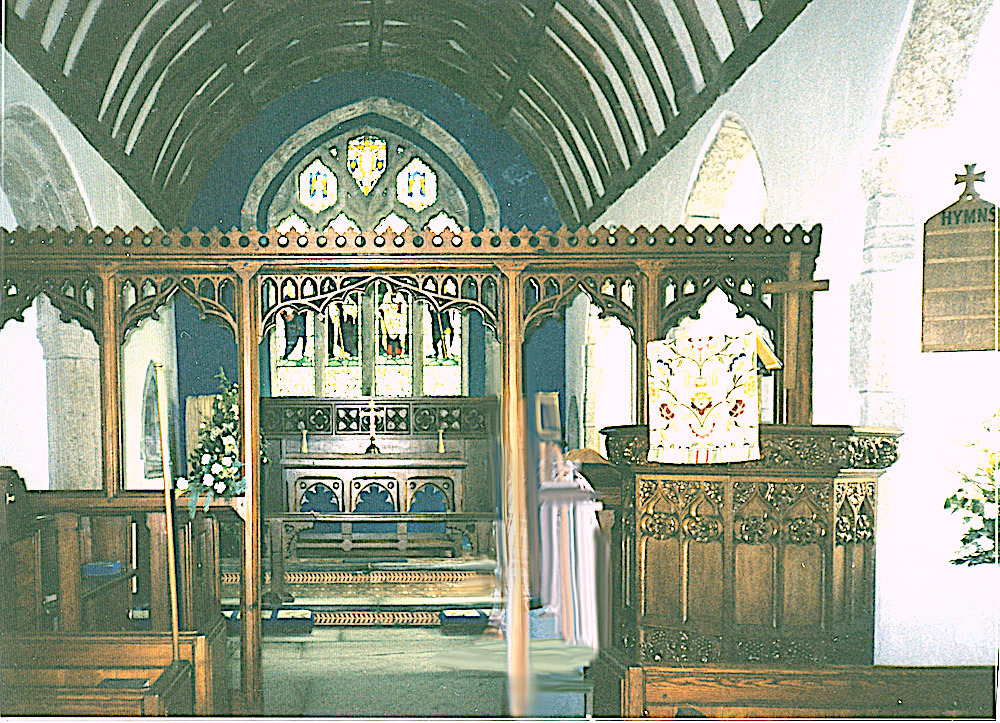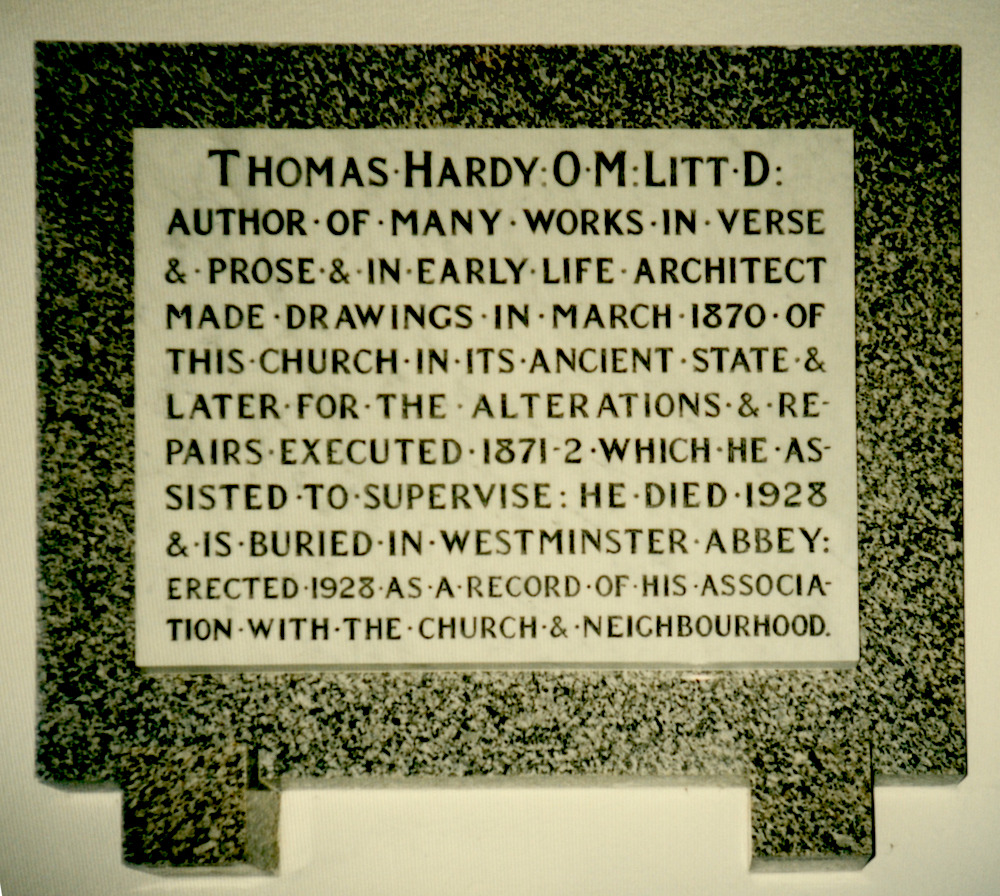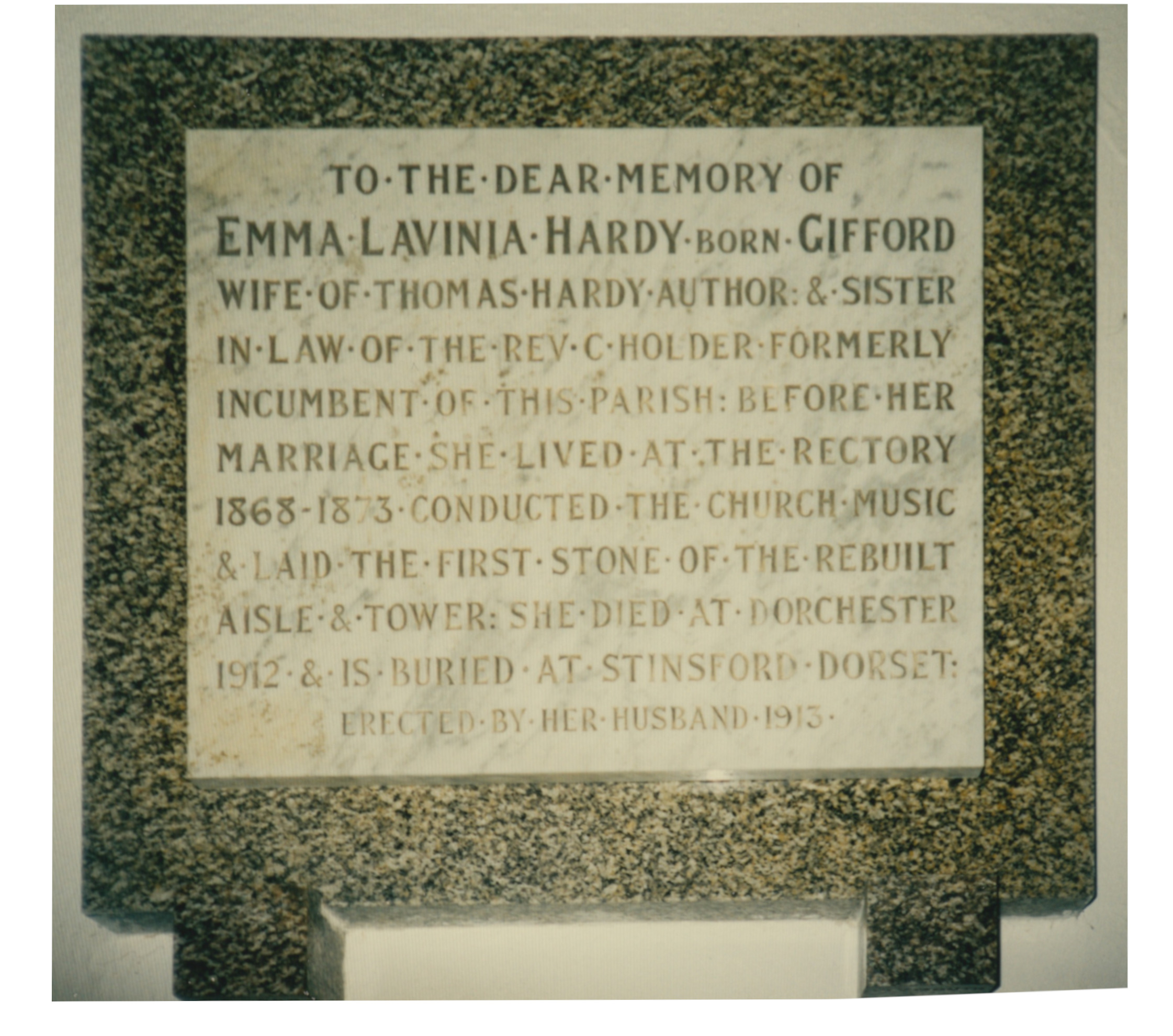Why go to Saint-Juliot? What's Juliot to me?
Some strange necromancy
But charmed me to fancy
That much of my life claims the spot as its key.
Thomas Hardy, "A Dream or No" (1913)

Church of St Juliot, near Boscastle, Cornwall (also called the Church of St Julitta) is magically situated on the north side of the leafy Valency Valley, where the ground slopes upward. A Grade II* listed parish church, it has a history going back to the late twelfth century, when it was first dedicated to this Cornish saint (see Orme 154). The building itself dates to around the fifteenth century, but the north aisle and three-stage tower date from its restoration in 1870-72, carried through by Thomas Hardy for the Dorset architect, G.R. Crickmay. It was on his first visit for this purpose that Hardy met and fell in love with Emma Lavina Gifford, sister-in-law of the incumbent, the Rev. C. Holder, who was then staying with her sister and brother-in-law at the rectory nearby.


Left: Signpost to the church. Right: A glimpse of the interior, with its pulpit and screen installed by Hardy, and the east window celebrating Jesus as the Good Shepherd.
According to the listing text, "[t]he restoration which was fairly severe, entailed the demolition of the nave and chancel which was replaced by the present smaller north aisle, the demolition of the north transept and the rebuilding of the west tower." Only the south aisle and south porch remained relatively unaltered — although here again, according to the listing text, the south aisle was "remodelled to form present nave and chancel." Moreover, again according to the listing text, and based on Hardy's own drawings of that time, "a fine set of circa C15 carved bench ends, screen and pulpit were removed during the restoration." In place now are "simple C19 and early C20 pitch pine furnishings, pulpit and chancel screen" (listing text).
These exchanges should not be blamed on Hardy. Stephen Smith, the young architect in A Pair of Blue Eyes (1873), recognises the "exquisite fifteenth-century workmanship" of the bench ends, noting with regret that they are "rapidly decaying" and would be "battered past recognition in the turmoil of the so-called restoration" (98). He sets about drawing them for posterity, as Hardy did himself. As for the present screen and pulpit, "installed by Hardy," these too were a matter of regret to him, having been "not entirely in accordance with his instructions. He wanted to repair and replace the original screen by careful patching, but the enthusiasm and generosity of the builders overtook his wishes" ("St Juliot").


Memorial plaques for Hardy and Emma.
Hardy's presence is keenly felt in the church. The plaque for Emma was to his own design, and the one added later to Hardy himself recognises the precise nature of his involvement in the church's restoration, by providing architectural drawings and supervising the work. At the west end of nave can be seen copies of Hardy's drawings of the bench ends, and the old north door (which was accidentally destroyed in 1870). Here too is an illustration of the old transept, from Emma's original watercolour of it. At the millennium, the Thomas Hardy Society raised money for the installation of a memorial window which also recognizes Hardy's involvement here.
As well as being important as the reason for Hardy's visit to this "remote Cornish hamlet" (Millgate 97), and his meeting of his future wife, the church and its surrounding area appear in A Pair of Blue Eyes and various poems which record and recall the early days of the couple's romance — for example, they are at the heart of the poet's destination in "When I Set out for Lyonesse" (1870) and later they are the "olden haunts" which he revisits in the poignant lyric, "After a Journey" (1913).
Related Material
First photograph © Tony Atkins, originally posted on Geograph, and kindly made available for reuse on the Attribution-ShareAlike 2.0 Generic (CC BY-SA 2.0) Creative Commons licence. It has been slightly corrected for perspective. Remaining photographs, text and formatting by Jacqueline Banerjee. You may use these images without prior permission for any scholarly or educational purpose as long as you (1) credit the photographer and (2) link your document to this URL in a web project or cite it in a print one. [Click on the images to enlarge them.]
Bibliography
Hardy, Thomas. A Pair of Blue Eyes. 1873. London: Penguin (Penguin Classics), 1986.
Orme, Nicholas. The Saints of Cornwall. Oxford: Oxford University Press, 2000.
St Juliot. British Listed Buildings. Web. 20 December 2020.
"St Juliot Church." Boscastle. Web. 20 December 2020.
Created 20 December 2020
Last modified 19 April 2024